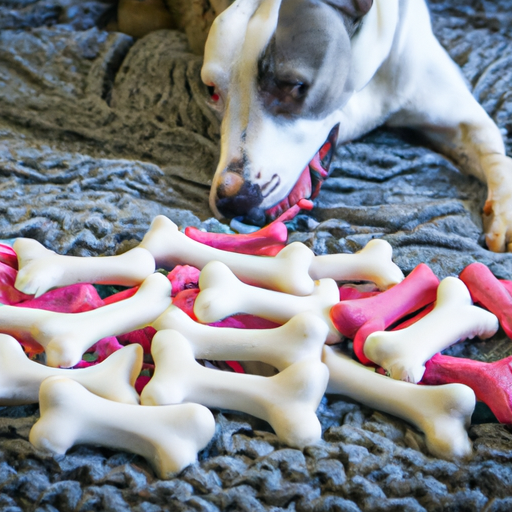As a loving pet parent, you’re always on the lookout for ways to keep your furry friend happy and healthy. One of the best ways to do this is by providing them with safe and appropriate chew bones. Chewing is a natural behavior for dogs that can help with dental health, reduce anxiety, and provide mental stimulation. However, not all chew bones are created equal. Some can pose serious risks to your dog’s health. In this guide, we’ll explore what chew bones are safe for dogs, what to look for when buying chew bones, and common questions about dog chew bones.
Table of Contents
- Safe Chew Bones for Dogs
- Factors to Consider When Buying Chew Bones
- Common Types of Chew Bones
- Frequently Asked Questions
Key Takeaways:
– Not all chew bones are safe for dogs.
– Hard chew bones can cause dental fractures.
– Rawhide chew bones pose a choking and blockage risk.
– Natural chew bones like bully sticks and antlers are a safer alternative.
– Always supervise your dog when they are chewing on a bone.
Safe Chew Bones for Dogs
When choosing a chew bone, safety should be your top priority. Hard bones, like cow or pig bones, can cause dental fractures. Rawhide bones can pose a choking risk or cause intestinal blockages if swallowed in large pieces. A safer alternative is natural chew bones, such as bully sticks, antlers, or dental chews designed for dogs. These bones are digestible, reducing the risk of blockages, and they’re also less likely to cause dental damage. Always supervise your dog when they’re chewing on a bone to ensure they’re safe.
The American Kennel Club provides a comprehensive guide on safe chew bones for dogs that you might find useful.
Factors to Consider When Buying Chew Bones
When buying chew bones for your dog, it’s important to consider the size, hardness, and material of the bone. The bone should be large enough that your dog can’t swallow it whole, but not so large that they can’t comfortably chew on it. Avoid bones that are too hard, as they can cause dental fractures. Finally, look for bones made from natural materials, like animal products or plant-based materials, as these are generally safer and more digestible for dogs.
Common Types of Chew Bones
There are several types of chew bones available for dogs. Here are a few to consider:
-
Bully Sticks: Made from dried bull or steer pizzle, these are a popular choice for many dog owners. They’re fully digestible and come in a variety of sizes to suit all breeds.
-
Antlers: Deer or elk antlers make excellent chew toys for dogs. They’re long-lasting and packed with nutrients like calcium and phosphorus.
-
Dental Chews: These are designed to help clean your dog’s teeth as they chew. Some dental chews even have added ingredients to help freshen breath.
-
Rawhide: Although popular, rawhide chews can be dangerous if swallowed in large pieces. They’re also not very digestible. Some dog owners choose to avoid them for these reasons.
-
Bones: Butcher bones or bones from your own meals are not safe for dogs. They can splinter and cause serious injuries, including blockages and tears in the digestive system.
You might also want to check out this article on One Top Dog for more information on safe chew bones for dogs.
Frequently Asked Questions
Q: Can I give my dog a bone from my dinner?
A: No, cooking changes the structure of the bone, making it more likely to splinter and cause injuries.
Q: Are rawhide chews safe for dogs?
A: Rawhide chews can pose a choking risk or cause intestinal blockages if swallowed in large pieces. Many vets recommend avoiding them.
Q: How often should I replace my dog’s chew bone?
A: This depends on how aggressively your dog chews and the type of bone. It’s a good idea to inspect the bone regularly and replace it if it’s worn down or broken.
Remember, the most important thing is to choose a chew bone that is safe and appropriate for your dog. Always supervise your dog when they’re chewing on a bone, and replace the bone if it becomes too small or worn down. For more information on dog care and health, check out the One Top Dog blog.



